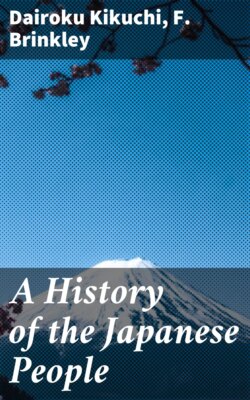Читать книгу A History of the Japanese People - Kikuchi Dairoku - Страница 162
На сайте Литреса книга снята с продажи.
ARCHITECTURE
ОглавлениеAs Chinese literature became familiar and as the arts of the Middle Kingdom and Korea were imported into Japan, the latter's customs naturally underwent some changes. This was noticeable in the case of architecture. Lofty buildings, as has been already stated, began to take the place of the partially subterranean muro. The annals make no special reference to the authors of this innovation, but it is mentioned that among the descendants of the Chinese, Achi, and the Korean, Tsuka, there were men who practised carpentry. Apparently the fashion of high buildings was established in the reign of Anko when (A.D. 456) the term ro or takadono (lofty edifice) is, for the first time, applied to the palace of Anko in Yamato. A few years later (468), we find mention of two carpenters,* Tsuguno and Mita, who, especially the latter, were famous experts in Korean architecture, and who received orders from Yuryaku to erect high buildings. It appears further that silk curtains (tsumugi-kaki) came into use in this age for partitioning rooms, and that a species of straw mat (tatsu-gomo) served for carpet when people were hunting, travelling, or campaigning.
*It should be remembered that as all Japanese edifices were made of timber, the carpenter and the architect were one and the same.
